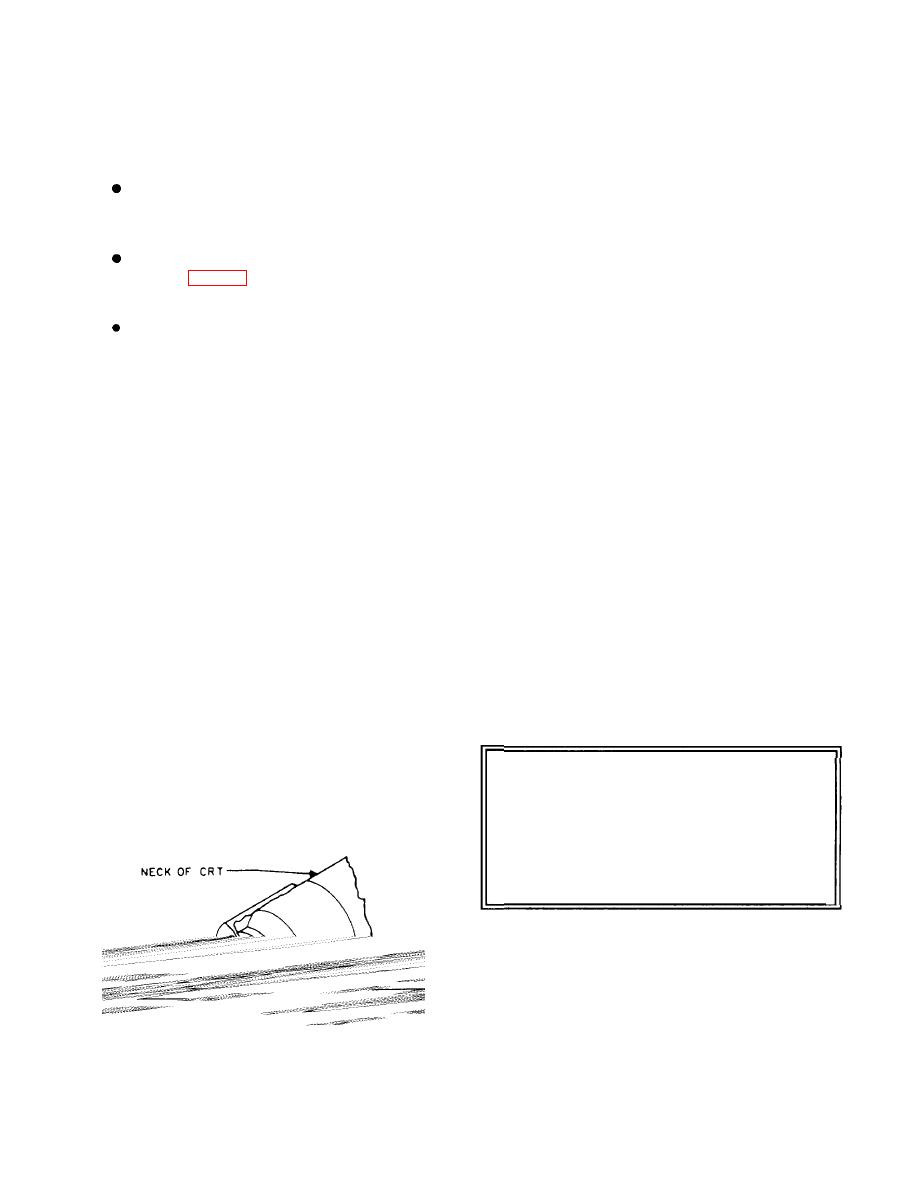 |
|||
|
Page Title:
Figure 1-13.--Cathode-ray tube base structure. |
|
||
| ||||||||||
|
|
 will float; if it washes ashore, it is dangerous to
Burns--Avoid spraying your hands, arms, face, or
other exposed parts of the body. Some liquid sprays
persons who may come in contact with it. A CRT
thrown in a dumpster represents a hidden booby trap.
are strong enough to burn the skin, while milder sprays
Therefore, always render the CRT harmless before
may cause rashes.
disposing of it. Use the following simple procedure to
Fire--Keep aerosol dispensers away from direct
render the CRT harmless:
sunlight, heaters, and other sources of heat. Do not
store dispensers in an area where the temperature can
Place the CRT that is to be discarded face down
exceed the limit printed on the container. Do not spray
in an empty carton and cover its side and back
volatile substances on warm or energized equipment.
with protective material.
Explosion--Do not puncture an aerosol dispenser,
Carefully break off the plastic locating pin from
Discard used dispensers in approved waste receptacles
the base (fig. 1-13). This can be done by crush-
that will not be emptied into an incinerator.
ing the locating pin with a pair of pliers.
Carefully break off the tip of the glass vacuum
seal. This can be done with a small screwdriver
or probe.
Exposure to chemical/solvent hazards may cause
significant health problems. Solvents are capable of
damaging your respiratory system in cases of
AEROSOL DISPENSERS
prolonged inhalation. Chemicals and solvents come in
the form of gas, vapor, mist, dust, or fumes. Materials
By deviating or ignoring procedures prescribed
ordinarily thought to be safe may be rendered
for selecting, applying, storing, or disposing of aerosol
hazardous under certain use conditions by the
dispensers, personnel have been poisoned, burned, or
uninformed user.
have suffered other physical injury. It is difficult to
Cleaning electrical and electronic equipment with
compile a list of specific precautions and safe
water-based and nonvolatile solvents is an approved
practices for handling aerosol dispensers due to the
practice. These solvents do not vaporize readily.
variety of industrial sprays that are available in this
When it is not possible to clean with a water-based
kind of container. However, users of aerosol
solvent, use inhibited methyl chloroform
dispensers can guard against poisoning, fire,
(1,1,1--trichloroethane). Methyl chloroform is a
explosion, pressure, and other hazards by regarding all
relatively safe effective cleaner when it is used in an
aerosols as flammable. You can prevent an injury or
adequately ventilated area. However, it should not be
hazard by following basic rules:
inhaled, and it should not be used on warm or hot
Poisoning--Adequately ventilate closed spaces
equipment.
where poisonous (toxic) substances are sprayed. Use
exhaust fans or portable blowers to supply these
spaces with fresh outside air. Where ventilation is
inadequate, do not spray unless you wear an air
WARNING
respirator or a self-contained breathing apparatus.
Do NOT wear a gas mask when cleaning
with methyl chloroform; its vapors displace
oxygen in the air.
NEVER USE CARBON TETRACHLORIDE AS
A CLEANING AGENT. It is a highly toxic
(poisonous) compound that is a suspected carcinogen.
Its threshold is 20 times lower than that of methyl
chloroform, making it more dangerous. (Threshold is
the point above which the concentration of vapor in
the air becomes dangerous.)
|
|
Privacy Statement - Press Release - Copyright Information. - Contact Us |